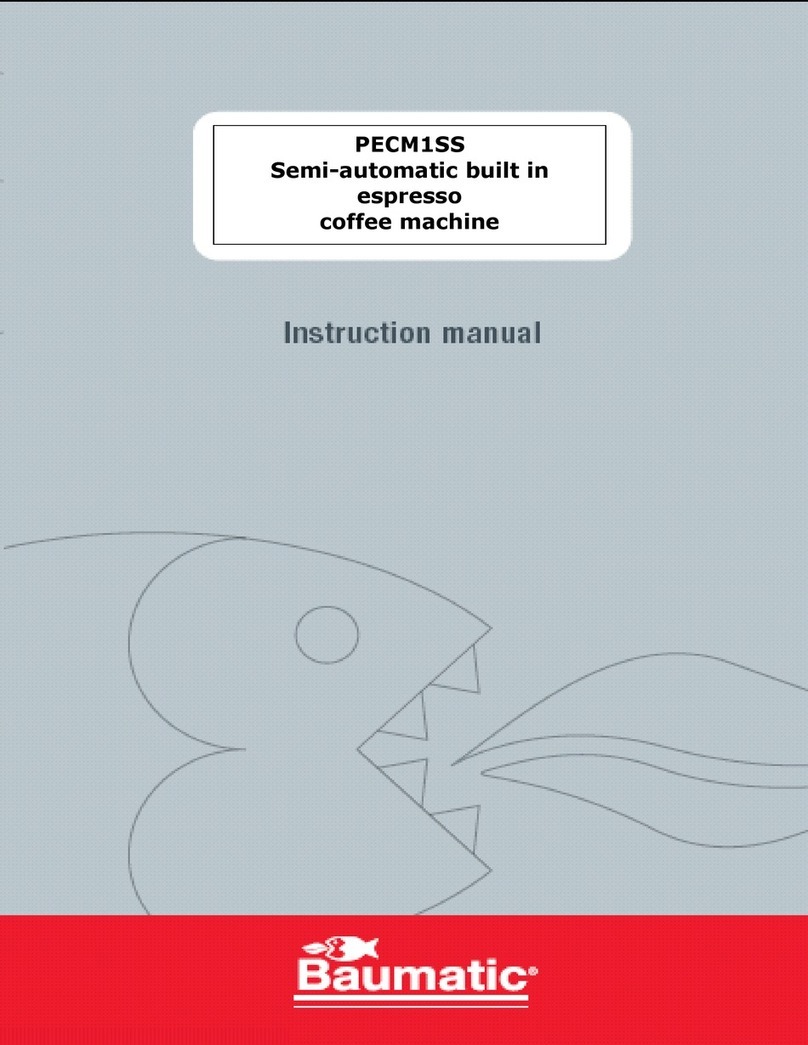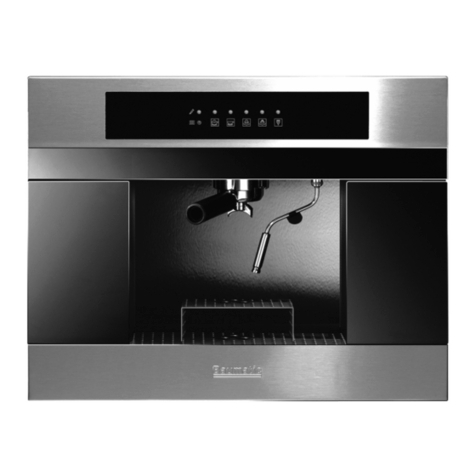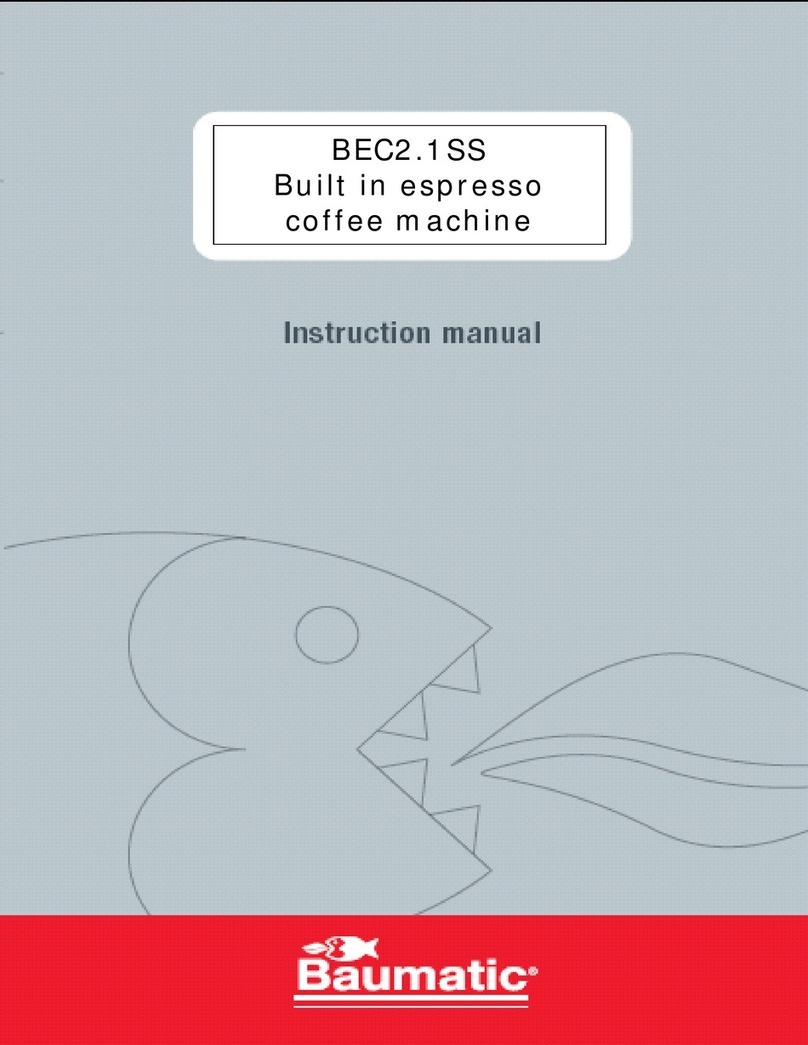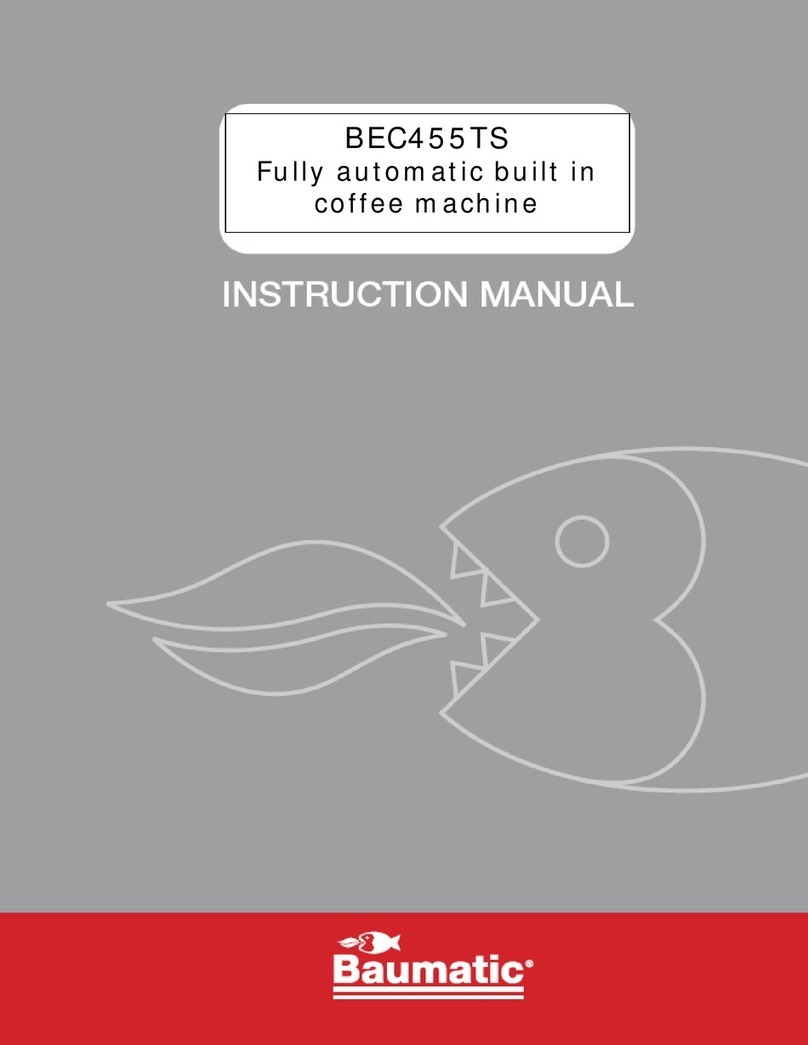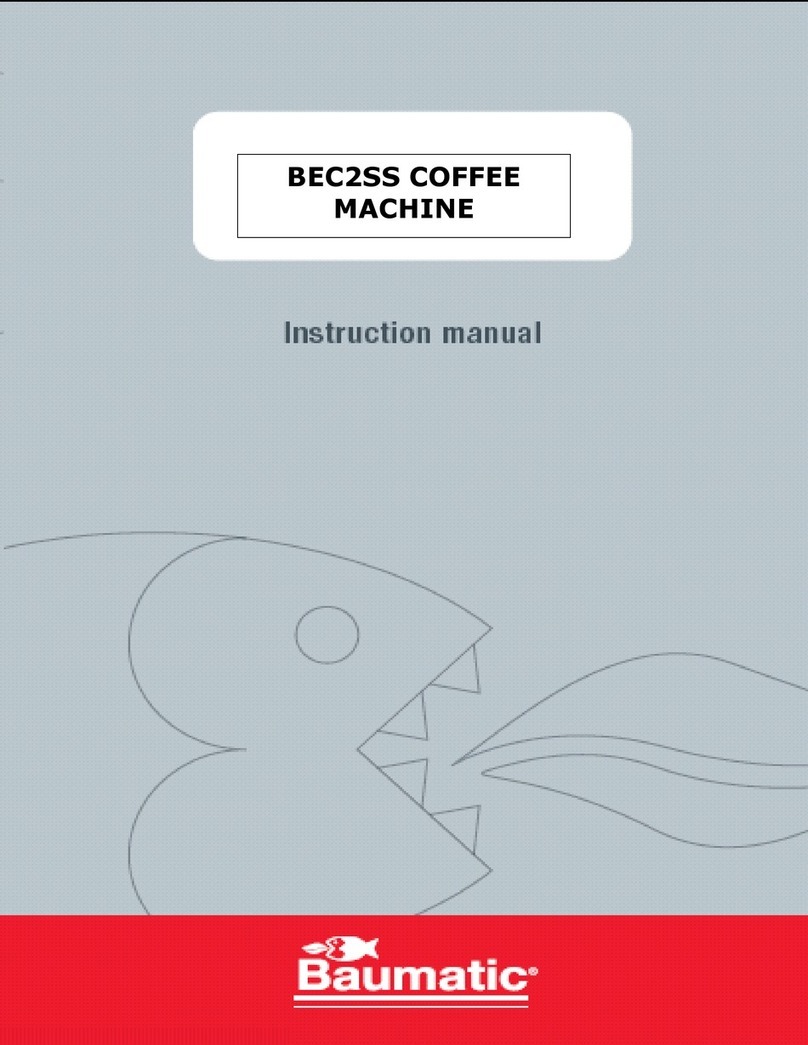
D / HYDRAULIC DIAGRAM
oth circuits, hot water/steam and coffee, use the same pump. Hence functions must be performed
ort description of the dynamics and operating sequences concerning the three main functions:
offee: required dose has been selected and the cycle has been started, powder preparation and
- Hot water: been selected, keep the start key pressed for the required dispensing time. er pushed
luid still in the
team: function has been selected, keep the start key pressed for the required dispensing time. arted, the
luid still in the
B
individually.
Below is a sh
-C
Once the
automatic unit positioning is followed by pump operation and the opening of the two solenoid valves. At this
point, the water flows through the flow meter which determines the dose, through the pump, the first solenoid
valve, the heat exchangers for the coffee and the second solenoid valve and then enters the plastic body of
the automatic unit. Here, after passing through the coffee pod, the coffee is collected by the brass part
mounted on the same heat exchanger from which it protrudes thanks to a silicone pipe and reaches the
dispenser. Once the cycle has terminated, the solenoid valves de-energize and drain the fluid still in the
circuit into the drip tray.
Once the function has
Upon starting the appliance, the pump and the hot water/steam solenoid valve are started, the wat
by the pump flows through the first solenoid valve and then enters the hot water/steam exchanger.
Once it has crossed the exchanger, it is conveyed to the hot water/steam outlet pipe junction.
Once the start key is released, the solenoid valve de-energizes and switches over so the f
circuit is drained into the drip tray.
-S
Once the
When the appliance is switched on, the pump and the hot water/steam solenoid valve are st
solenoid valve in normal operation and the pump by means of short but frequent pulses. The water pushed
by the pump flows through the first solenoid valve and then enters the hot water/steam exchanger.
Once it has crossed the exchanger, it is conveyed to the hot water/steam outlet pipe junction.
Once the start key is released, the solenoid valve de-energizes and switches over so the f
circuit is drained into the drip tray.
3







